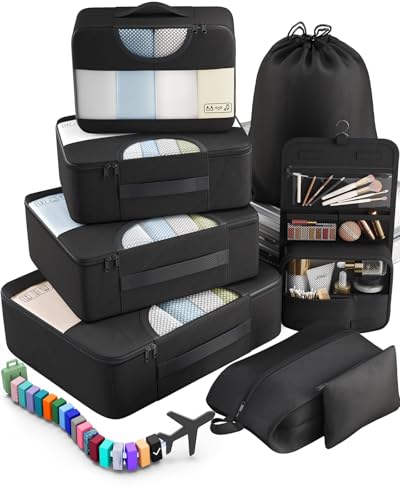In Tunisia, they use Type C and E power plugs and outlets. The voltage is 230V, and the frequency is 50Hz.
So, you’ll need a travel adapter in Tunisia. Their plugs and outlets are different from the Type A and B ones we use back in the States.
Quick Overview of the Plugs in Tunisia:
- Plug type in Tunisia: C and E
- Standard voltage: 230V
- Frequency: 50Hz
- Need a travel adapter? Yes, you do need a travel adapter
- Need a voltage converter? Only necessary for specific appliances
- Recommended plug adapter: Vintar Universal Travel Adapter Kit
Our content is built on official sources, including country-specific electrical guidelines, IEC standards, and insights from real travelers who’ve experienced it firsthand.
The Only Travel Adapter You’ll Need in Tunisia
Not all travel adapters work everywhere. We don’t sell them, but we’ve spent hours comparing the best options for Tunisia—factoring in voltage, plug types, and reliability. This one came out on top:
Recommended Travel Plug Adapter
by 1,000+ travelers on Amazon
Forgot your power adapter and you’re already traveling? It’s not the end of the world—most airports and local stores sell them. But packing your own means you’re ready to go the moment you land, with no extra stops needed.
Travelers going through Tunisia often visit nearby countries like Italy, Libya, and Algeria. Plug types may differ across borders.
Power Outlets in Tunisia
In Tunisia, they use Type C and E power plugs and outlets.
Type C

Type C outlets have two round prongs and no grounding pin. Type E and F plugs usually fit too, but grounded plugs will need an adapter.
Type E

Type E outlets have two round prongs and a grounding pin at the top. Type C and F plugs will also fit.
Do You Need a Voltage Converter?
Before plugging in your electronics in Tunisia, check the voltage. It’s different from the 120V used in the U.S., so you’ll likely need a converter.
Before traveling, always double-check the input voltage label on your device. If it states “100-240V, 50/60 Hz”, your device is designed to handle different power systems and won’t need a converter. This includes most phones, tablets, laptops, cameras, and rechargeable personal care items.

Which Travel Devices May Need a Converter?
Don’t want to guess which converter works? Here are the best-reviewed ones worth checking out.
| Device | Need Converter? | Notes |
|---|---|---|
| Phone | ❌ No (usually) | Most modern phone chargers are dual voltage (100–240V) |
| Laptop | ❌ No (usually) | Check the power brick label for 100–240V |
| Hairdryer | ✅ Yes (often) | High wattage; many models are not dual voltage |
| Electric toothbrush | ⚠️ Check voltage | Some models are 110V only |
| Camera / DSLR | ❌ No (usually) | Most chargers are dual voltage |
| Power bank | ❌ No | Charges via USB, adapter is enough |
| Electric shaver / trimmer | ⚠️ Check voltage | Older or cheaper models may not support 230V |
| Tablet / iPad | ❌ No | All models are dual voltage |
| Portable fan | ✅ Yes (sometimes) | Many models are not compatible with 230V |
| Game console | ⚠️ Check voltage | Newer consoles like PS5 and Xbox are often dual voltage — check to be sure |
| Bluetooth speaker | ❌ No (usually) | Charges via USB |
| E-reader (Kindle, etc.) | ❌ No | USB charging only, no converter needed |
Top Travel Essentials to Pack
Forget just the bare essentials—these extras make your trip more efficient, comfortable, and hassle-free.
Digital Luggage Scale
Packing Cubes
Power Bank
More About Tunisia
Tunisia delivers Mediterranean beaches, North African history, and deep cultural vibes in just 71,000 mi²—about the size of Georgia. With a mix of Phoenician, Roman, Arab, Ottoman, and French layers, the cultural mash-up here is real.
Comfortable beaches stretch from Hammamet to Sousse and Monastir, all favoring affordable stays in three-star comfort, but Tunisia also boasts mind-blowing heritage sites: Carthage, El Djem’s Roman colosseum, Kairouan’s Great Mosque, and the Sahara dunes full of desert oases.
Best times to visit are spring and fall—warm sun (mid-70s to low-80s°F) and fewer crowds. You’ll spend your days mixing UNESCO sites and medina strolls with sandy downtime, sandy-clay spa dips in desert hot springs, and nights sampling olive-oil drizzled couscous under the stars.
Top places to visit in Tunisia: Tunis, Sousse, Hammamet, Djerba, and Monastir.




